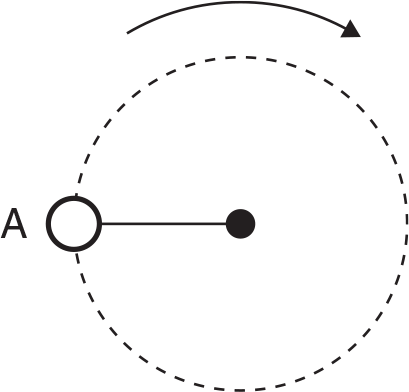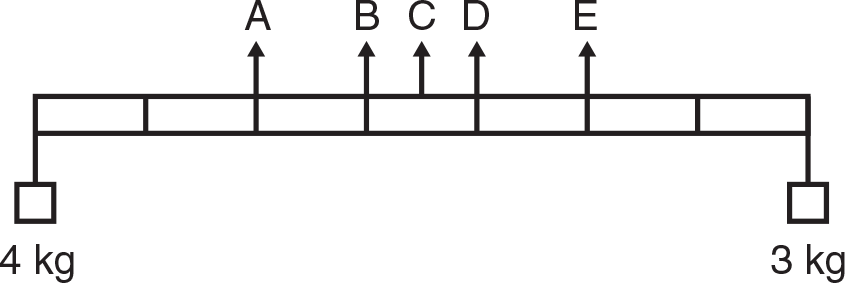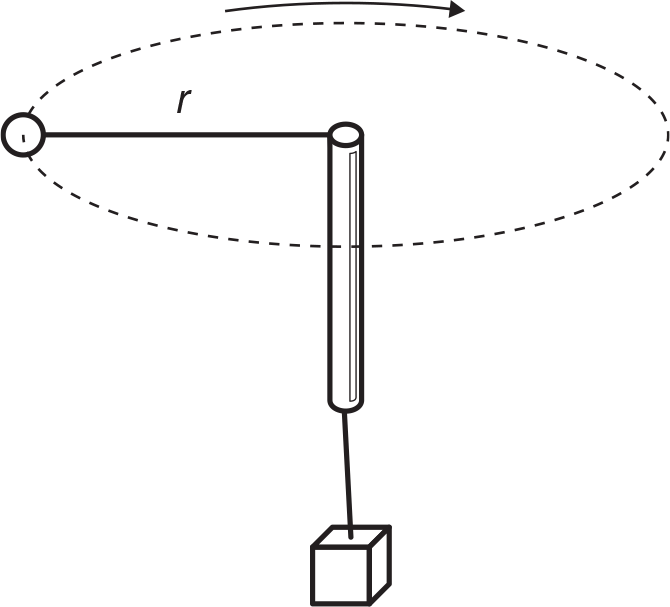Review Questions
-
Questions 1–2 refer to the following diagram.
-

-
A ball on the end of a string is swung in a horizontal circle, rotating clockwise as shown. When the ball is at point A, the direction of the velocity, centripetal force, and centripetal acceleration vectors, respectively, are
-
If the string were suddenly cut when the ball is at point A in the figure above, the subsequent motion of the ball would be
- to move to the right.
- to move to the left.
- to move to the top of the page.
- to move to the bottom of the page.
- to move up and to the left.
-
-
Questions 3–5 refer to the following diagram.
-
A 30 kg child sits on the edge of a carnival ride at a radius of 2 m. The ride makes 2 revolutions in 4 s.

-
The period of revolution for this ride is
-

-

- 2 rev/s.
- 2 s.
- 4 s.
-
-
The speed of the child is most nearly
- 4 m/s.
- 6 m/s.
- 24 m/s.
- 120 m/s.
- 360 m/s.
-
The force that is holding the child on the ride is most nearly
- 30 N.
- 180 N.
- 300 N.
- 540 N.
- 4,320 N.
-
-
Torque
- is the vector product of force and lever arm length.
- is a scalar and has no direction associated with it.
- is always equal to force.
- is always greater for shorter lever arms.
- must always equal zero.
-
Two blocks of mass 3 kg and 4 kg hang from the ends of a rod of negligible mass marked in seven equal parts.

At which of the points indicated should a string be attached if the rod is to remain horizontal when suspended from the string?
- A
- B
- C
- D
- E
-
A ball is tied to a string that passes through a glass tube and is attached to a hanging mass.

The tube is held vertically as the ball is swung in a horizontal circle at a radius r and speed v. If the string is pulled through the tube by hanging a larger mass on the string so that the radius becomes
 the speed of the ball will become
the speed of the ball will become-

- 2 v.
- 3 v.
- 4 v.
- v (unchanged).
-




